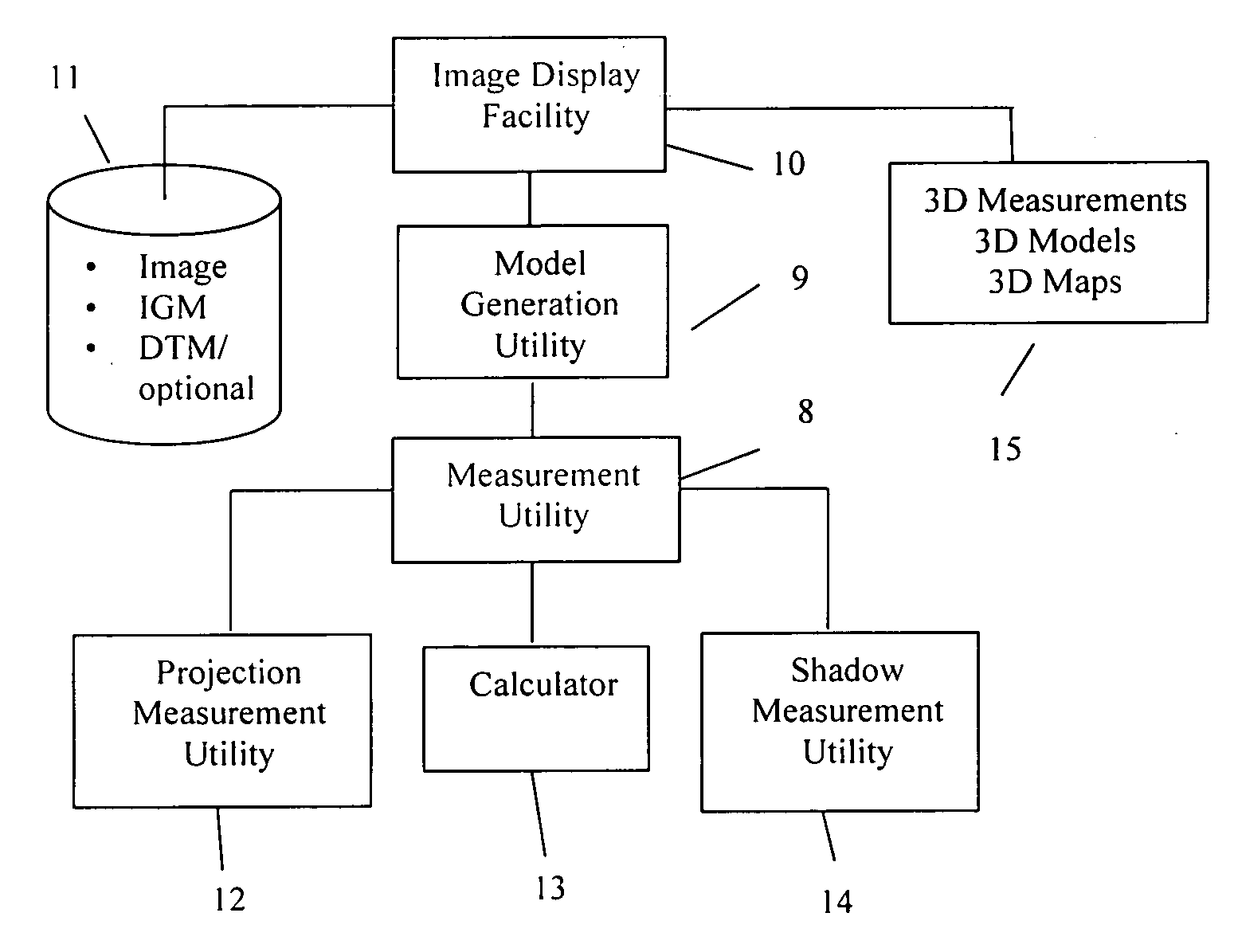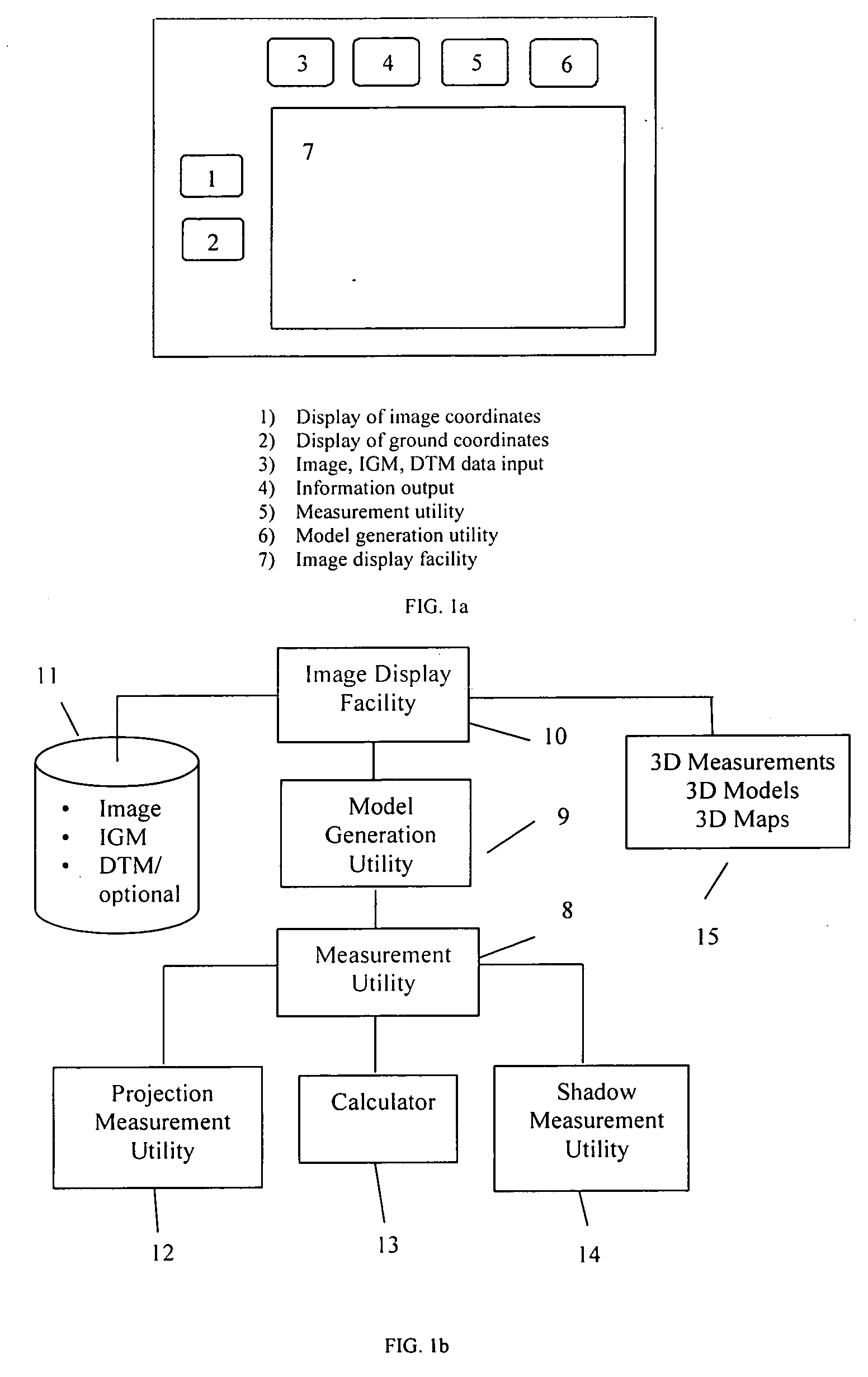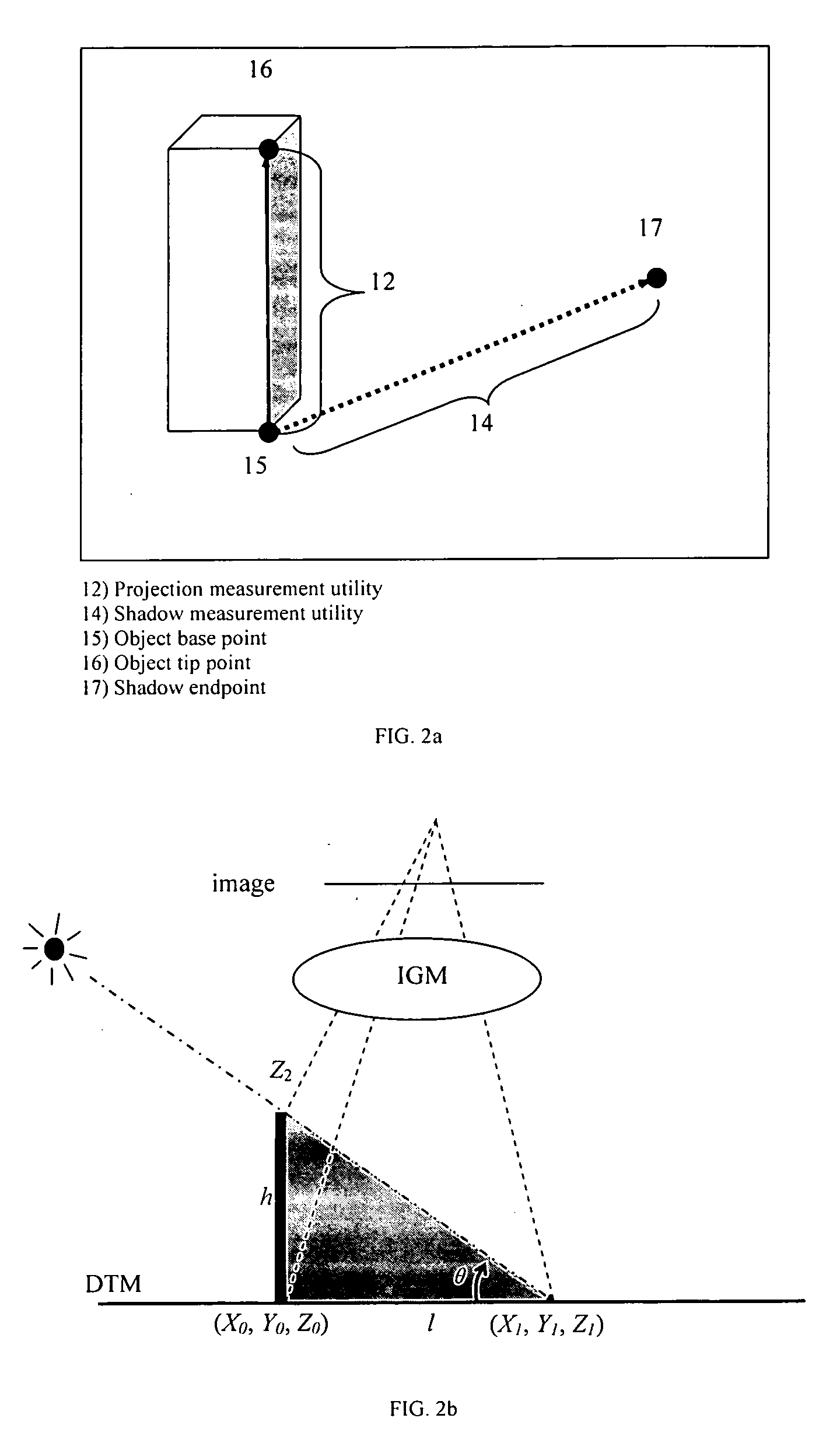System, computer program and method for 3D object measurement, modeling and mapping from single imagery
a computer program and single imagery technology, applied in the field of system, computer program and method for 3d object measurement, modeling and mapping from single imagery, can solve the problem that the dimensions of moving objects are not readily measured using stereo pairs
- Summary
- Abstract
- Description
- Claims
- Application Information
AI Technical Summary
Benefits of technology
Problems solved by technology
Method used
Image
Examples
example 1
Measuring when the Full Projection is Visible
[0094]An experiment was conducted to demonstrate advantages of the present invention in connection with projection-based measurement. A projection ruler can be drawn, visualizing adjusted height information iteratively until the ruler line reaches the true tip of the object. In FIG. 4a, line 1001 represents the outline of the building. As the operator begins by indicating the base of the building (thick black circle 1002) and then raises the height (thick black line 1003) of the floating cursor. As the cursor is raised iteratively, its position in the image is computed by the IGM on in the real time and the cursor is continuously drawn in the graphic user interface. Once the cursor touches the roof edge in the image (thick black circle 1004), this interactive procedure stops. In actual interface line 1003 will be appeared as green as a representative embodiment of the present invention. The height of the roof, as shown in FIG. 4b is 48.6 ...
example 2
Measuring when the Full Shadow is Visible
[0102]An experiment was conducted to demonstrate advantages of the present invention for the purpose of shadow-based measurement. A shadow ruler (in actual interface the line will be appeared as blue as a representative embodiment of the present invention) is drawn on the image in the graphic user interface illustrate herein. Height information is iteratively adjusted until the ruler line fits the whole shadow in the image. As shown in FIG. 8a, the operator begins by locating the end point of the object's shadow (circle 1005) in the image and then raises the height of the floating cursor. As the cursor is raised, the position of the base point is updated as described in FIG. 7b, and their locations in the image are computed by the IGM. A line (dotted line 1006) connecting the base point and shadow endpoint and a second line (1007) connecting the base point and the raised cursor are drawn in the graphic user interface. Once the cursor reaches ...
example 3
Measuring when the Projection and Shadow are Partially Visible
[0103]Several cases are performed to demonstrate advantages of the present invention of shadow-based measurement for immeasurable projections and shadows. In following cases, the base points of the objects can not be located reliably or do not exist, but the shadow ruler can locate the base point accurately. In FIG. 9 the shadow (1009) is measured by a dotted line, and the projection (1010) is measured by a bold line. The intersection of the two lines is the base point to be located.
[0104]FIG. 9a shows the measurement of an airplane in the air. The airplane is in the air and has no physical base point on the ground. The measured height is 57.1 m. In FIG. 9b, an overpass is measured, the dotted line (1011) is the measured shadow length and the thick line (1012) is the measured projected height (13.8 m). In FIG. 9c, a tree is measured, the dotted line (1013) is the measured shadow length and the thick line (1014) is the mea...
PUM
 Login to View More
Login to View More Abstract
Description
Claims
Application Information
 Login to View More
Login to View More - R&D
- Intellectual Property
- Life Sciences
- Materials
- Tech Scout
- Unparalleled Data Quality
- Higher Quality Content
- 60% Fewer Hallucinations
Browse by: Latest US Patents, China's latest patents, Technical Efficacy Thesaurus, Application Domain, Technology Topic, Popular Technical Reports.
© 2025 PatSnap. All rights reserved.Legal|Privacy policy|Modern Slavery Act Transparency Statement|Sitemap|About US| Contact US: help@patsnap.com



